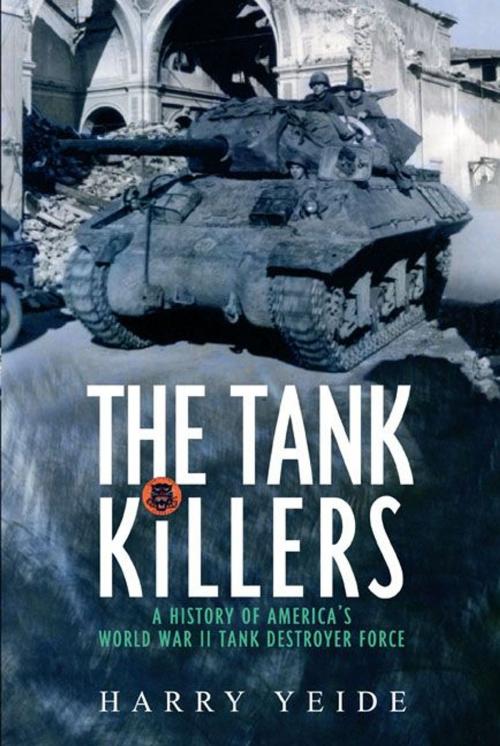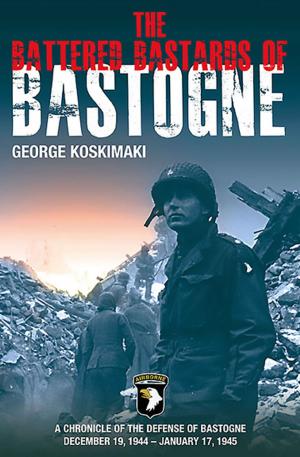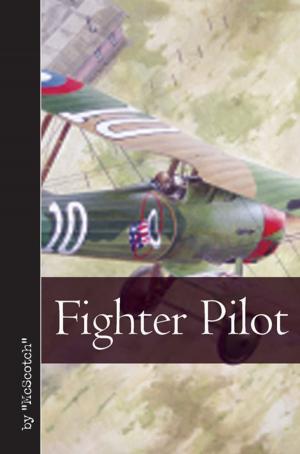Tank Killers A History Of America's World War II Tank Destroyer Force
A History of America's World War II Tank Destroyer force
Nonfiction, History, Military, World War II| Author: | Harry Yeide | ISBN: | 9781935149736 |
| Publisher: | Casemate | Publication: | April 19, 2010 |
| Imprint: | Casemate | Language: | English |
| Author: | Harry Yeide |
| ISBN: | 9781935149736 |
| Publisher: | Casemate |
| Publication: | April 19, 2010 |
| Imprint: | Casemate |
| Language: | English |
The Tank Killers is the story of the American Tank Destroyer Force in North Africa, Italy, and the European Theater during World War II. The tank destroyer (TD) was a bold-if some would say flawed-answer to the challenge posed by the seemingly unstoppable German blitzkrieg. The TD was conceived to be light and fast enough to outmaneuver panzer forces and go where tanks could not. At the same time, the TD would wield the firepower needed to kill any German tank on the battlefield. Indeed, American doctrine stipulated that TDs would fight tanks, while American tanks would concentrate on achieving and exploiting breakthroughs of enemy lines.The Tank Killers follows the men who fought in the TDs from the formation of the force in 1941 through the victory over the Third Reich in 1945. It is a story of American flexibility and pragmatism in military affairs. Tankdestroyers were among the very first units to land in North Africa in 1942. Their first vehicles were ad hoc affairs: Halftracks and weapons carriers with guns no better than those on tanks and thin armor affording the crews considerably less protection. Almost immediately, the crews realized that their doctrine was incomplete. They began adapting to circumstances, along with their partners in the infantry and armored divisions. By the time that North Africa was in Allied hands, the TD had become a valued tank fighter, assault gun, and artillery piece. The reconnaissance teams in TD battalions, meanwhile, had established a record for daring operations that they would continue for the rest of the war.The story continues with the invasion of Italy and finally that of Fortress Europe on 6 June 1944. By now, the brass had decreed that half the force would convert to towed guns, a decision that dogged the affected crews through the end of the war. The TD men encountered increasingly lethal enemies, ever more dangerous panzers that were often vulnerable only to their guns while American tank crews watched in frustration as their rounds bounced harmlessly off the thick German armor. They fought under incredibly diverse conditions that demanded constant modification of tactics. Their equipment became ever more deadly. By VE day, the tank destroyer battalions had achieved impressive records, generally with kill/loss rates heavily in their favor. Yet the Army after the war concluded that the concept of a separate TD arm was so fundamentally flawed that not a single battalion existed after November 1946.The Tank Killers draws heavily on the records of the tank destroyer battalions and the units with which they fought. Veterans of the force add their personal stories.
The Tank Killers is the story of the American Tank Destroyer Force in North Africa, Italy, and the European Theater during World War II. The tank destroyer (TD) was a bold-if some would say flawed-answer to the challenge posed by the seemingly unstoppable German blitzkrieg. The TD was conceived to be light and fast enough to outmaneuver panzer forces and go where tanks could not. At the same time, the TD would wield the firepower needed to kill any German tank on the battlefield. Indeed, American doctrine stipulated that TDs would fight tanks, while American tanks would concentrate on achieving and exploiting breakthroughs of enemy lines.The Tank Killers follows the men who fought in the TDs from the formation of the force in 1941 through the victory over the Third Reich in 1945. It is a story of American flexibility and pragmatism in military affairs. Tankdestroyers were among the very first units to land in North Africa in 1942. Their first vehicles were ad hoc affairs: Halftracks and weapons carriers with guns no better than those on tanks and thin armor affording the crews considerably less protection. Almost immediately, the crews realized that their doctrine was incomplete. They began adapting to circumstances, along with their partners in the infantry and armored divisions. By the time that North Africa was in Allied hands, the TD had become a valued tank fighter, assault gun, and artillery piece. The reconnaissance teams in TD battalions, meanwhile, had established a record for daring operations that they would continue for the rest of the war.The story continues with the invasion of Italy and finally that of Fortress Europe on 6 June 1944. By now, the brass had decreed that half the force would convert to towed guns, a decision that dogged the affected crews through the end of the war. The TD men encountered increasingly lethal enemies, ever more dangerous panzers that were often vulnerable only to their guns while American tank crews watched in frustration as their rounds bounced harmlessly off the thick German armor. They fought under incredibly diverse conditions that demanded constant modification of tactics. Their equipment became ever more deadly. By VE day, the tank destroyer battalions had achieved impressive records, generally with kill/loss rates heavily in their favor. Yet the Army after the war concluded that the concept of a separate TD arm was so fundamentally flawed that not a single battalion existed after November 1946.The Tank Killers draws heavily on the records of the tank destroyer battalions and the units with which they fought. Veterans of the force add their personal stories.















